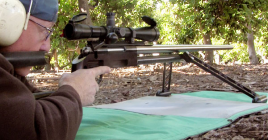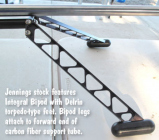Ned Ludd
Silver $$ Contributor
Trevor - I understand your interpretation; however, the rule doesn't make any distinction about the specific type of bipod feet, whether they track or not, or whether they might make any indentation or not. It simply states they cannot create a track, which could easily include an indentation, and must be able to be moved in any direction without lifting the rifle. Moving a rifle with a Harris-type bipod having rubber feet across the rubber insert in most shooting mats will not happen easily. In fact, the whole point of using rubber feet and a having a rubber insert on a shooting mat when pre-loading a Harris-type bipod is so they don't move and the bipod can be pre-loaded. That is why the simple addition of a clause stating that this segment of the bipod rule is solely for bipod feet that are intended to track would solve the issue.YMMV but as i read it
The rule wouldn't affect a shooter using a Harris bipod.
- Harris doesn't make tracks.
- The rubber pad of a shooting mat won't make or hold tracks.
- the rubber shooting mat surface is smooth
Would the rubber feet of the Harris with the rubber surface of he shooting mat , get you DQ'd for this specfic aspect of the rule "The pad surface should be smooth enough to allow the bipod to be moved in any direction without having to lift the rifle or move the pad that the bipod is on."
No... ICFRA rules FTR bipods are allowed to have spiked feet, which can be up to 2" they do not allow the bipod to move in any direction without lifting the rifle. NRA doesn't appear to have the spike language anymore.
But have someone win a major match with a Harris and rubber mat and see if it gets challenged.
Cheers
Trevor
It may turn out in actuality that this rule is never actually applied to someone using a tradition Harris-type bipod at a match. The problem is that is could be. F-TR started out with people largely using Harris-type bipods, so it seems rather unfortunate that a simple wording issue of this rule might potentially make shooting a pre-loaded bipod illegal in F-TR. Although many F-TR shooters have moved to ski-type bipods, there are still a number of shooters that use a traditional bipod, especially among newer additions to the sport, where it may be all they own at the time. It would be much better to clarify the rule now, rather than wait until someone wins or places well enough at a state, regional, or larger match, only to find out their setup has been judged to be illegal. To that end, I will contact the NRA Rules Committee and point out this the potential problem with the rule. If anything comes of it, I will report it back here.












